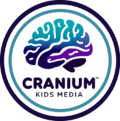As an elementary school counselor, I’m always on the lookout for engaging tools to teach social-emotional skills. Enter What’s in Ned’s Head, a whimsical game that has become a favorite game in my counseling sessions. This quirky and delightful game not only captivates young minds but also provides practical ways to illustrate inside-the-head and outside-the-head distractions. This game pulls double duty – it helps me nurture essential life skills and teach how to manage distractions.
A Fun Game that Nurtures Life Skills
A Hands-On Sensory Adventure: What’s in Ned’s Head offers a hands-on, sensory experience that engages kids. With eyes closed, children dive into Ned’s Head to identify various hidden objects by touch alone. This immersive play stimulates their senses, promotes mindfulness, and provides grounding techniques to manage stress and anxiety.
Sparking Creativity and Communication: As kids explore Ned’s Head, they embark on imaginative adventures, weaving stories around the objects they feel. This creative play encourages self-expression and helps children communicate their thoughts and feelings more effectively.
Fostering Resilience and Adaptability: The unpredictability of the game challenges kids to adapt to unexpected outcomes. They learn to embrace resilience, realizing that success sometimes requires navigating challenges with a positive attitude.
Strengthening Mindful Communication: What’s in Ned’s Head? fosters mindful communication as children describe their discoveries without visual cues. This game hones active listening, patience, and understanding, laying the foundation for effective communication.
A Teaching Tool for Distraction Management
I like to use Ned’s Head as a tool to illustrate inside-the-head and outside-the-head distractions in a creative and innovative way. The concept of reaching into Ned’s Head to find hidden objects can be a great metaphor for exploring different types of distractions that children may encounter in their daily lives.
Inside-the-Head Distractions:
- Thoughts and Worries: Inside-the-head distractions can represent the thoughts and worries that children may have during various activities. These distractions can disrupt their focus and attention.
- Daydreams: Sometimes, children might get lost in their imagination, leading to internal distractions that divert their focus from the task at hand.
- Memory Triggers: The game can be an opportunity to discuss how certain objects may trigger specific memories or associations that distract them mentally.
Outside-the-Head Distractions:
- Environmental Distractions: These distractions come from external sources, such as noises, other people, or visual stimuli that can draw a child’s attention away from the task they are working on.
- Electronic Devices: The game can lead to discussions about how electronic devices and screens can be distractions and affect attention and focus.
- Peer Influence: External distractions can also come from peers or friends, where children may feel the need to respond to their actions or opinions, even when it hampers their concentration.
By using What’s in Ned’s Head? as a visual and hands-on representation of distractions, you can engage children in meaningful discussions about the various types of distractions they might encounter. It provides an opportunity to teach strategies for managing distractions and improving focus, such as mindfulness techniques, organizing their environment, and setting clear goals.
Moreover, it can open the door for discussing the importance of self-awareness and recognizing when distractions are impacting their learning or daily activities. Encouraging children to identify and communicate their distractions can empower them to find effective solutions and stay more present and engaged in different situations.
Using games like What’s in Ned’s Head? as a teaching tool adds an element of fun and relatability, making it easier for children to grasp and retain important concepts about distractions and their impact. It’s a fantastic way to combine play and learning while addressing valuable social-emotional skills. Try using this game creatively to support children’s development!

